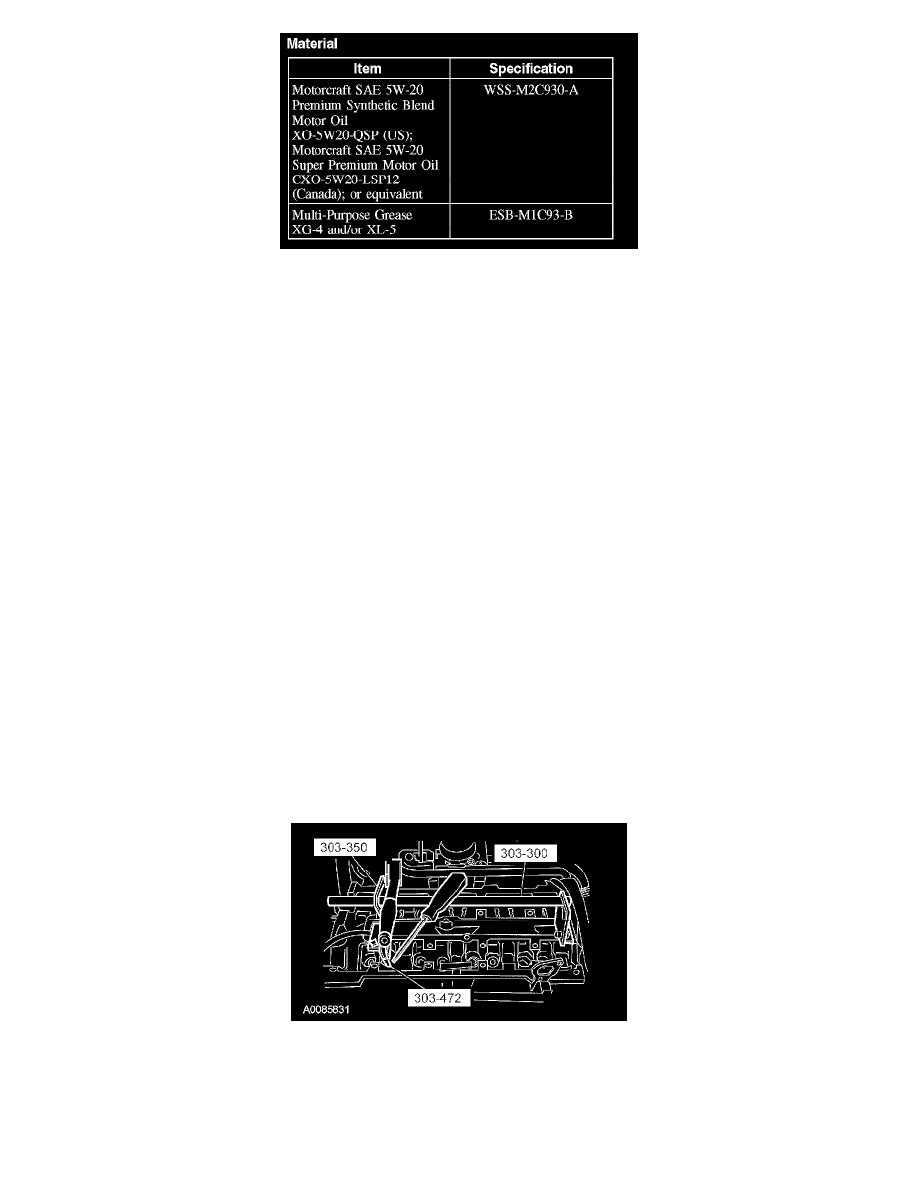Fusion FWD L4-2.3L VIN Z (2007)

Material
Removal
CAUTION: During engine repair procedures, cleanliness is extremely important. Any foreign material, including any material created while cleaning
gasket surfaces, that enters the oil passages, coolant passages or the oil pan can cause engine failure.
1. With the vehicle in NEUTRAL, position it on a hoist.
2. Remove the camshafts.
3. CAUTION: If the camshafts and valve tappets are to be reused, mark the location of the valve tappets to make sure they are assembled in their
original positions.
NOTE: The number on the valve tappets only reflects the digits that follow the decimal. For example, a tappet with the number 0.650 has the
thickness of 3.650 mm.
Remove and inspect the valve tappets.
4. Remove the spark plugs.
5. WARNING: Always wear protective goggles when working with compressed air. This can prevent injury. Failure to follow these
instructions can result in personal injury.
CAUTION: Use compressed air at 7 to 10 bars (100-150 psi). Do not disconnect the compressed air from the cylinder until the valve spring,
valve spring retainer and valve collet is installed.
Connect compressed air supply to the No. 1 cylinder.
6. NOTE: Place all parts in order to one side.
Apply compressed air to the cylinder and remove the valve spring.
^
Using the special tools, compress the valve spring and remove the valve collet, using some grease and a small screwdriver.
^
Remove the valve spring retainer and the valve spring.
7. Using the special tools, remove and discard the valve seal.
